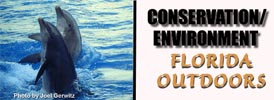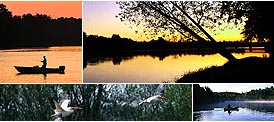
Cypress Swamps | Hardwood Swamps | Freshwater Marshes | Beaches & Dunes | Maritime Forest | Salt Marsh | Mangroves


The mangrove habitat is one of the state's most diverse and unique natural areas. Consisting of three tree species and a limited understory, this is the only tropical habitat in the continental U.S. While the most luxuriant mangrove forests grow in extreme south Florida, the trees survive from Tampa south along the west coast and from Cape Canaveral south along the east coast. Tidal mud flats, sandbars, and oyster bars also commonly occur with mangroves.
The Ten Thousand Islands of the lower southwest coast and the Florida Bay region of Everglades National Park have the largest mangrove forests. Here trees may grow to 60 feet high. Flushed by the daily tide mangrove are among the most productive habitat in the world, far more so than most forms of modern agriculture.
Mangroves flourish in the salt-water environment although scientific evidence shows that mangroves do not require salt water to survive. They will grow in freshwater but apparently do not do well because they cannot compete with the plant species that typically grow there.
Red, black and white mangroves are the three Florida species. Red mangroves, most commonly seen at the shoreline mangrove forest interface are easily recognizable by their unique prop and drop roots. Black and white mangrove lack these specialized roots. All three species have relatively thick, fleshy leaves evergreen leaves.
A small percentage of these are always in the process of turning yellow and falling off the tree. The leaves, one they fall into the water, rapidly decay and the microscopic bits of leaf material become the primary source of food for a wide range of marine invertebrates. In turn, these organisms are preyed upon by small fish that are food for larger fish.












